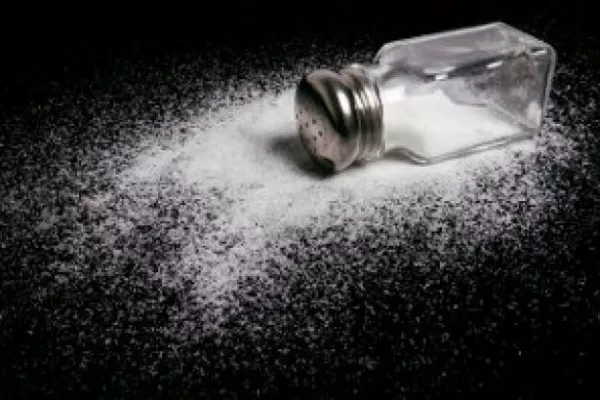New York City is facing an imminent challenge to a new rule requiring restaurant chains to post warnings on dishes with high amounts of salt, the latest battle in its campaign to improve public health on the fast-food front.
The city has banned trans fats and required menus to list calorie counts, though it lost in its bid to limit the size of sugary drink servings. Now the National Restaurant Association says it’s planning to sue to block the sodium rule, which goes into effect Tuesday. The regulation places an “overly onerous and costly burden” on eateries already dealing with higher costs from Governor Andrew Cuomo’s plan to create a $15 minimum wage for fast-food workers, the group said.
The rule is “the tipping point for the hardworking men and women that own and operate New York’s restaurants,” said the Washington-based association, which represents more than 500,000 restaurants nationwide.
The city became the first municipality to require chains to post high-sodium warnings when its Board of Health approved the rule in September. It requires restaurants with at least 15 US locations - a group that accounts for about a third of the city’s restaurant traffic - to identify menu items with more than 2,300 milligrams of sodium, the recommended daily limit for adults, and label them with a warning icon of a salt shaker in a triangle.
Blood Pressure
Cutting sodium can help lower high blood pressure and reduce the risks of heart attacks and strokes. One in three New York City deaths is due to heart disease, according to Health Department surveys. Nick Paolucci, a spokesman for the city’s law department, said in an e-mail that New York is “confident that the Board of Health has the authority to enact this rule” and will address specific claims after the suit is filed.
The amount of sodium at issue is equal to one teaspoon of salt, according to the Health Department’s guidelines for restaurants. The department won’t start issuing violations until 1 March, when eateries will be subject to a $200 fine if they don't comply.
The move mirrors decisions made by the administration of former Mayor Michael Bloomberg to ban trans fats, require menus to include calorie counts and limit the size of sugary sodas. Current Mayor Bill de Blasio has vowed to continue those efforts. Other cities in the US and around the world have followed New York’s lead.
The lawsuit is likely to set up another long food fight. The restaurant and beverage industries blocked Bloomberg’s bid to ban oversize sodas in 2014, when the state’s highest court ruled that the Board of Health lacked authority to impose the restriction. Bloomberg, the founder and majority owner of Bloomberg, the parent company of Bloomberg News, had asked restaurants and food manufacturers to voluntarily reduce the amount of salt in their menu items.
It isn't clear that the new sodium warning will get people to change their eating habits. A study published this month in the journal Health Affairs found that the percentage of people who noticed and factored in calorie counts while making their choices at fast-food chains in the New York City area declined with time. The study found no statistically significant change in the level of calories or other nutrients purchased, or in how often the survey respondents visited fast-food restaurants.
Labelling “remains an unproven strategy for improving the nutritional quality of consumer food choices,” it concluded.
Fewer Calories
The city’s Health Department disagreed, saying in a statement that the study’s findings apply “only to a predominantly low-income high-minority population.” The study confirms “that those who purchase food in fast-food restaurants with calorie postings are more likely to report seeing and using the calorie information to order food with fewer calories.”
Among black adults, 36 per cent have been diagnosed with high blood pressure, a rate 50 percent higher than for whites, according to the Health Department.
The new rule has already spurred restaurants to lower the sodium in their offerings.
One chain, Panera Bread, said it cut the amount of salt in three of its menu items in New York, to avoid having to warn customers about the sodium content. That included the Bacon Turkey Bravo sandwich, which the Center for Science in the Public Interest had listed in September among the fast-food menu items with more than 2,300 milligrams of sodium. The chain, which declined to comment on the association’s plan to sue, also removed salt from its bread bowl and its Italian combo sandwich.
The industry says the new sodium rule is unnecessary in light of federal regulations that will take effect next year. Those rules, part of the Affordable Care Act, would require chains of 20 restaurants or more to provide calorie counts and other nutritional information on menus.
“Local mandates like the one the Board of Health put forth unravel that uniformity,” the trade group said.
Peter Huenning, an associate professor at Columbia University’s Mailman School of Public Health in Manhattan, said other cities will probably impose similar requirements, forcing restaurants to change nationwide.
“If they want to sell their products in New York City,” Huenning said, “they can either choose to create a whole separate packaging and industry or just change everything they do, and usually they just change everything they do.”
News by Bloomberg, edited by Hospitality Ireland









